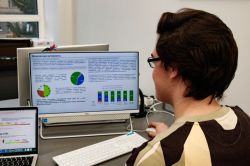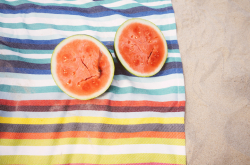Cryotherapy
Cryosauna is a medical device used for cryotherapy treatment. This type of cryotherapy when the whole body is exposed to cryogenic gas is called Whole Body Cryotherapy (WBC). WBC has a strong therapeutic effect on the human body, as it relieves pain and can be used to treat a variety of diseases. So how does it work?
Cryotherapy stimulates your immune and endocrine systems. During the procedure, the human body is exposed to extremely low temperatures (below −100 °C) for very short periods of time, while the entire procedure lasts up to three minutes. The cold air activates special receptors in the skin and muscles, which, in turn, trigger a series of physiological responses within the body. About -3°С is enough to activate the receptors without causing hypothermia. According to Professor Alexander Baranov, Head of ITMO’s Cryogenic Technology Department, such exposure triggers an alarm signal on the skin surface, which, in turn, initiates a checkup of the whole body.

It is also important to note that the effect of WBC is different from that of other hypothermic procedures, e.g. cold water immersion, as it doesn’t cause so much stress. Thanks to this, no special training is needed before the procedure, and there are no age restrictions.
Russian Development
Cryotherapy was developed in Japan in the 1970's by doctor Toshima Yamauchi who started exploring the effects of cold temperatures on the human body and created the first cold chamber. But he didn’t manage to establish the production and bring the technology to the market, as it was far too expensive back then: one such device cost a fortune. But the technology was not forgotten.

In 1986, a large-scale project called “Cryotherapy in Russia” was launched Alexander Baranov worked on this project from its very beginning. It took almost 12 years to develop the idea, produce the first prototype and conduct clinical trials. Among the first volunteers were patients of the 32nd city hospital who suffered severe diseases, such as rheumatoid arthritis.
Research in the field of cryogenic technology is now conducted both at ITMO University and the scientific and production enterprise Krion, where many ITMO graduates work. The company is now producing several types of cryosaunas, from mobile units to professional devices with enhanced functionality. The equipment is exported to Switzerland, Germany, Japan, USA, Italy and other countries.
According to Krion’s staff, the main advantage of their products is that they are safer and handier in comparison to regular cold chambers, as they don’t hamper the patients’ movements and the doors can be easily opened if a patient suddenly needs to leave the chamber.
Treatment, cosmetology, and sports
Cryotherapy has shown very promising results in the treatment of psoriasis. But it can also be used for treating rheumatoid arthritis, bronchial asthma, and diabetes, notes Alexander Baranov. Besides, this technology is actively used in cosmetology and in sports medicine to accelerate the recovery after intense exercise, relieve pain, and accelerate the regeneration of injured tissue.
“What makes cryotherapy so special is that it helps your body to regenerate naturally, and only have to trigger this process. Research indicates that an hour of cryotherapy is enough for an athlete to recover after a long and intense workout,” continues Alexander Baranov.
Among the most popular cryosaunas in sports medicine are one-person cryo-saunas made by Krion. They are very compact so that athletes can use them during competitions. The cryosaunas developed by Krion have already been tested during several big international competitions.

Tour de France 2011 was the first experience of collaboration between Krion and international organizations. French experts in sports medicine learned about the Russian cryochambers when they were in Japan. They got interested and came to ITMO University to attend the “Cryotherapy in Russia” conference, which has been held since 2008. At ITMO University, they ordered a mobile version of a cryosauna. The device was used throughout the race. Installed in a car, it traveled with athletes more than 1000 kilometers.
That’s when the Olympic Committee proposed using these devices at the Universiade in Kazan and the World Martial Arts Games in 2013. In 2014, they were used at the Winter Olympics in Sochi and the summer Asian Games in Incheon (South Korea), while at the World Cup 2018, two Krion cryosaunas were rented by teams from England and Japan.

Prospects and tasks
In the future, the company plans to expand to the Latin American market, where cryogenic technologies are not yet very popular, as well as work on further improvement of the device.
“Our task is now to make a reliable and accessible equipment, as well as to attract the public attention to the opportunities cryotherapy offers. Apart from that, we want social institutions, like care homes for elderly people to start using our devices. We had a patient who was 95, and she responded very well to our treatment,” shares Alexander Baranov.



